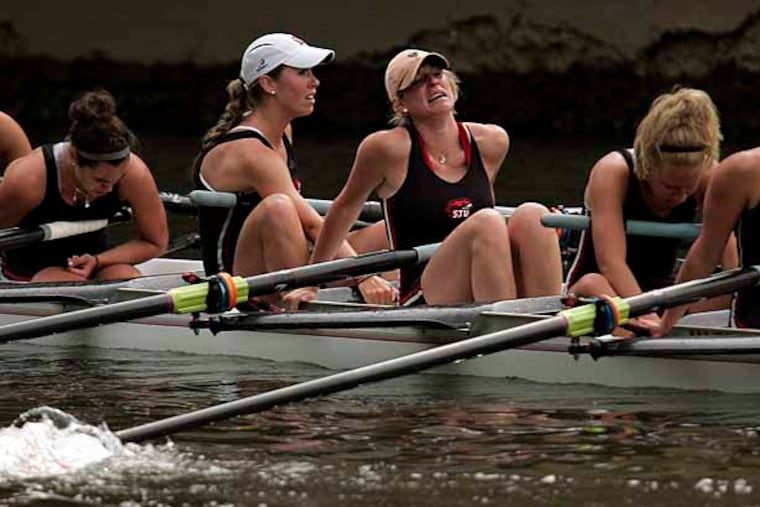Schuylkill rowers close gap on dredge money, but still risk losing big regattas
With a deadline rapidly approaching, a rowing organization says it is still more than $1 million short needed to dredge the Schuylkill racecourse and will have to start dropping events if the money is not raised.

A rowing organization says that it is closer to reaching a goal of $4.5 million for a much-needed dredging of the Schuylkill, but that if the gap isn’t closed soon, big regattas might go elsewhere.
The funding race is coming down to the wire, said Paul Laskow, chairman of the Schuylkill Navy River Restoration Committee. Supporters have only until March to come up with the money.
Laskow said he believes the supporters are less than $1 million away from the total. He credits officials from Mayor Jim Kenney’s office, the Department of Parks and Recreation, and the Managing Director’s Office with helping close the gap.
“It’s still very much a close call, but I’m feeling pretty optimistic,” Laskow said.
Laskow said the deadline is needed so there’s time to put the dredge project out to bid by May and start work in July. There’s only a narrow window when the work can be done, he said, without disrupting a big chunk of the fall regatta season. The project is expected to take about 90 days.
Laskow has pushed for several years to have the river dredged after it became apparent silt buildup along the famed national racecourse was making lanes an uneven depth. Racers want even depth lanes for fairness.
The race course runs from above Strawberry Mansion Bridge to the Columbia Railroad Bridge. Boathouse Row, farther downriver, runs to the Fairmount Dam. In all, that’s 3.5 miles of river to be dredged.
The area has not been dredged since 1999. Silt has created shallow waters in at least two of six lanes of the national course used in such famed regattas as the Dad Vail and Stotesbury Cup. Lane 6 is less than two feet deep in places, while other lanes are closer to 10 feet deep.
Moreover, some areas in front of Boathouse Row measure less than a foot, creating a hazardous situation for rowers, who could get stuck.
Laskow said the regattas draw national attention and pump millions into the local economy.
Last year, the rowers turned to the U.S. Army Corps of Engineers, but it said a dredge is not within its scope to pay for because it deems the use as recreational. So the rowers turned to the city and six universities that use Boathouse Row and racecourse for help.
Penn, Drexel, Temple, Jefferson, La Salle, and St. Joseph’s are the universities that row on the river.
Efforts by the city, Schuylkill Navy, and the universities have so far brought in $3.5 million to $4 million. Laskow said he could not release details on where the money is coming from until the city is ready to make the announcement.
He said the city and Schuylkill Navy also turned to foundations and donors, some of whom wanted to remain anonymous.
Still, the shortfall persists and rowing officials believe they are under the gun not just for this season but for the future.
Nearby Cooper River facilities, owned by Camden County, are growing in stature as a racing venue and could scoop up more regattas if the Schuylkill is not dredged.
Last spring, heavy rains made conditions on the Schuylkill dangerous and the Stotesbury Cup Regatta, the world’s biggest high school competition, had to be moved at the last minute from the Schuylkill to Cooper River. Crews arrived to find a well-run event with a quarter mile of tents for parents, students, and vendors, as well as new grandstands.
“The city is working hard at a very high level,” Laskow said. “I’d say we’ve gained a little momentum. It’s developing quickly.”